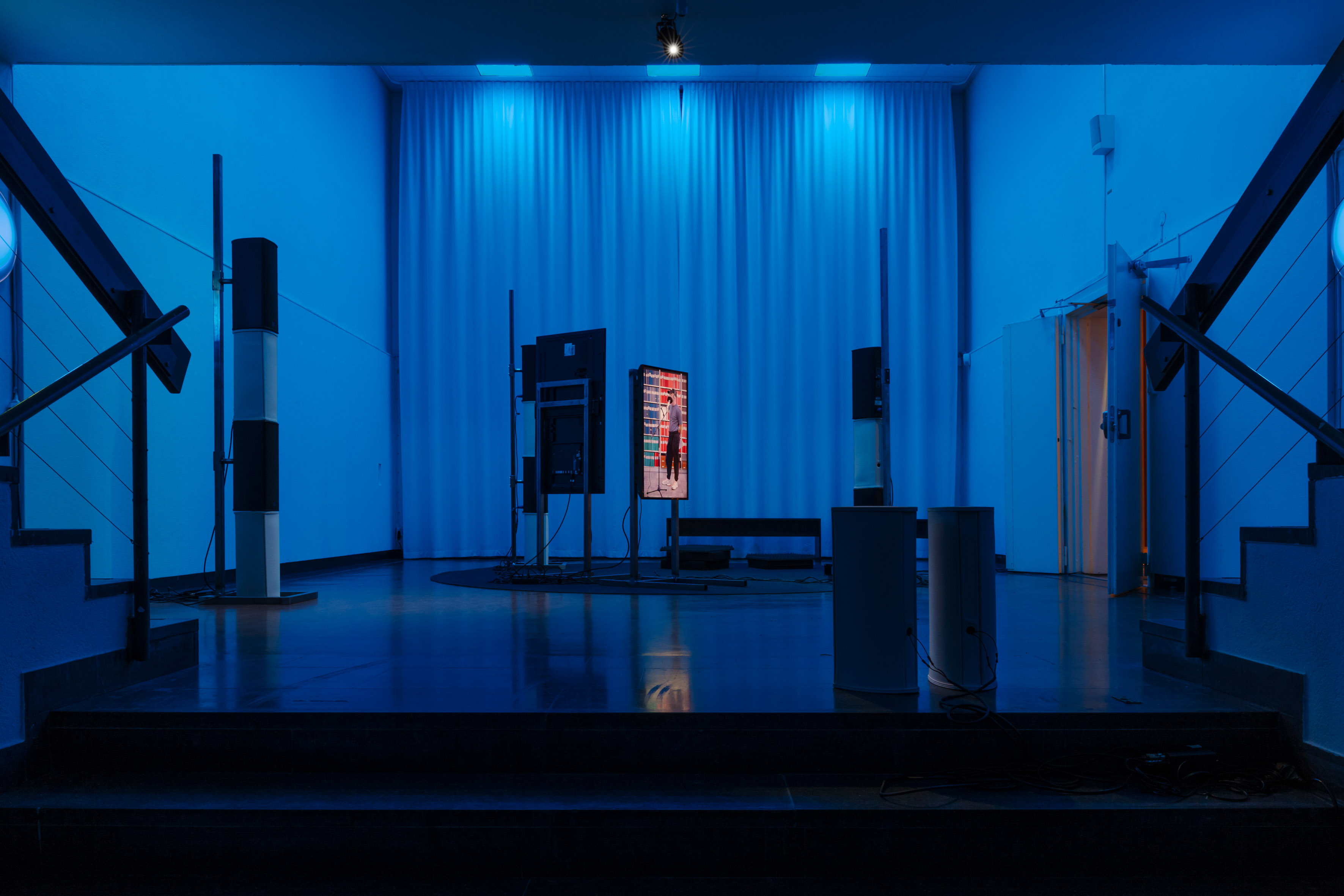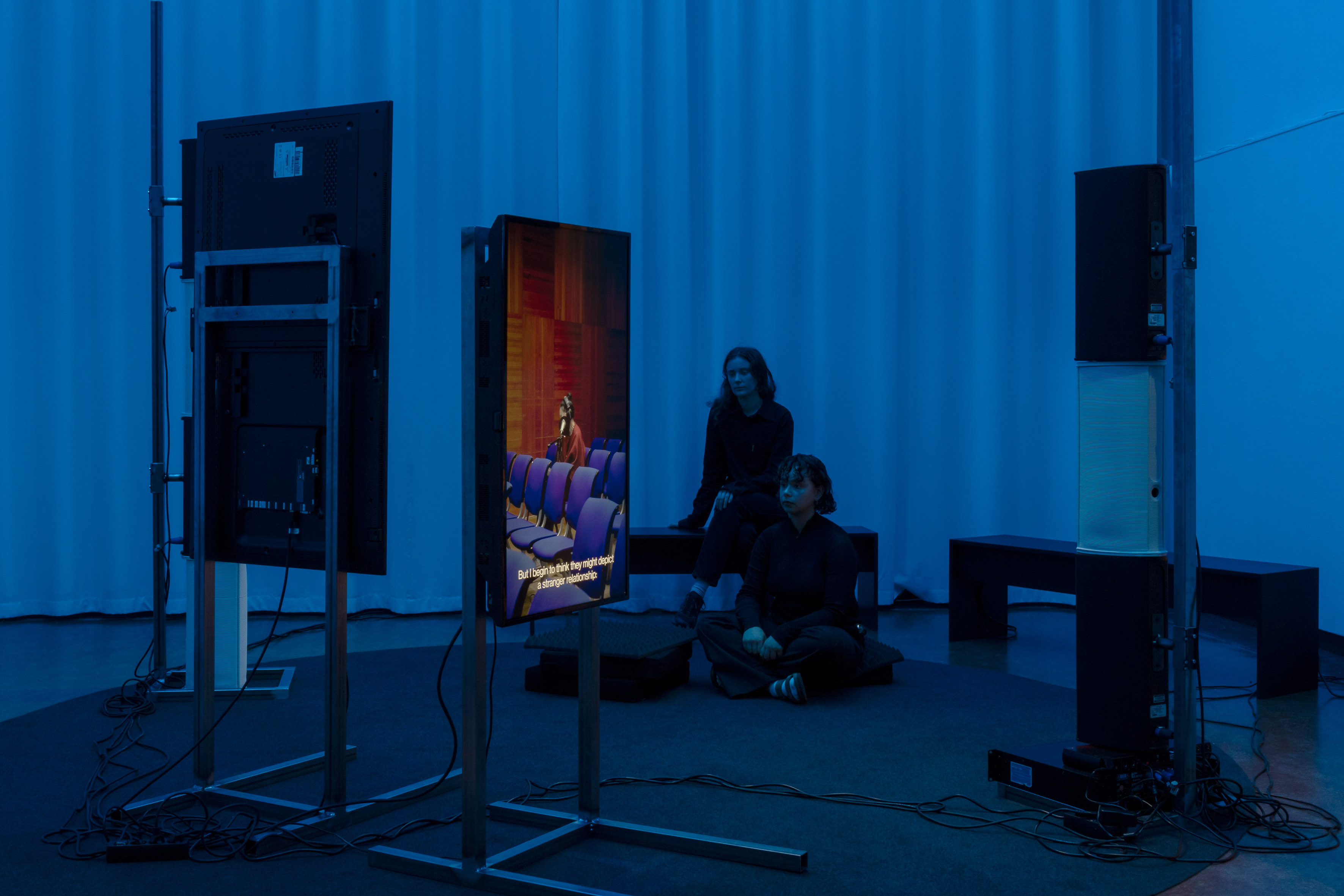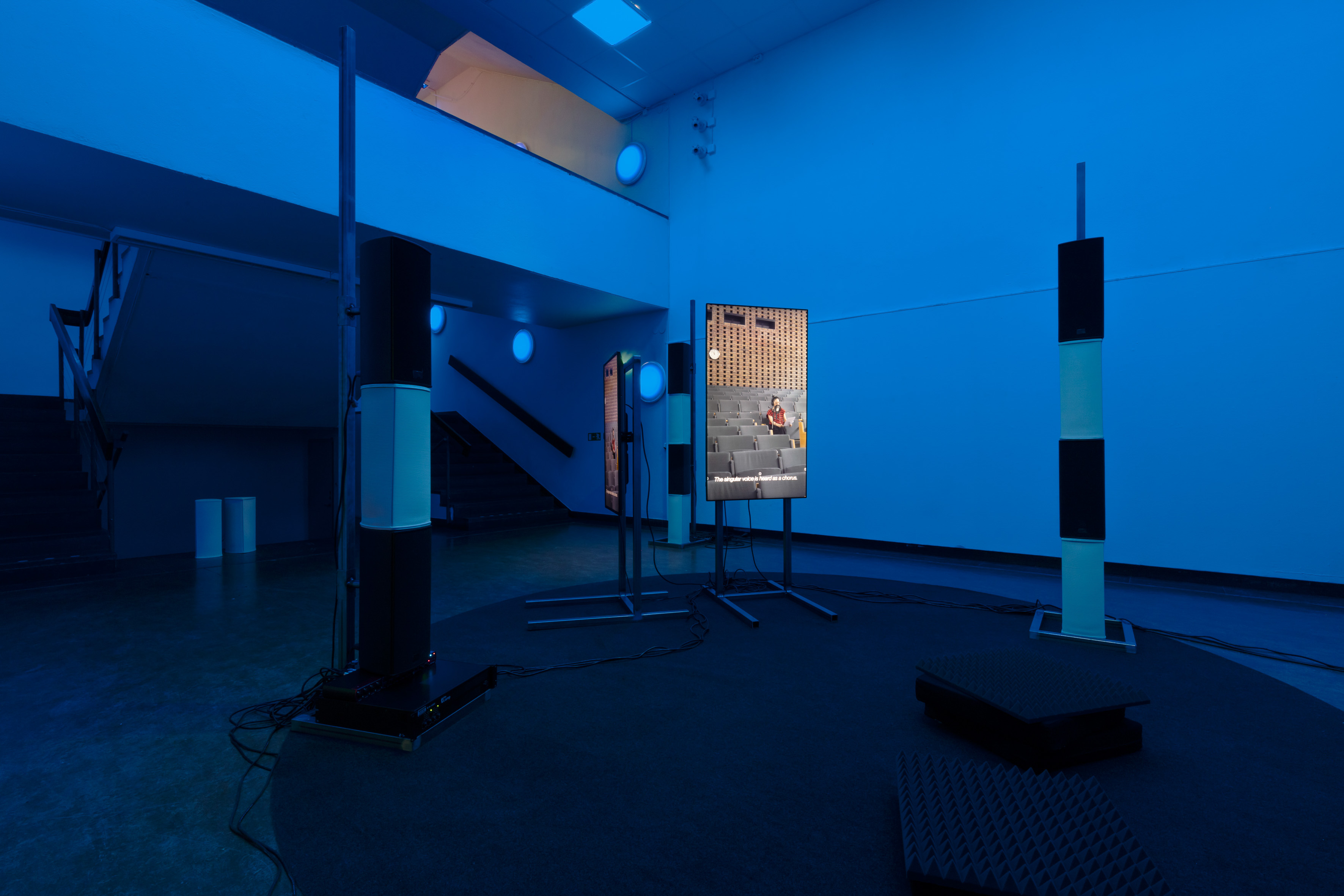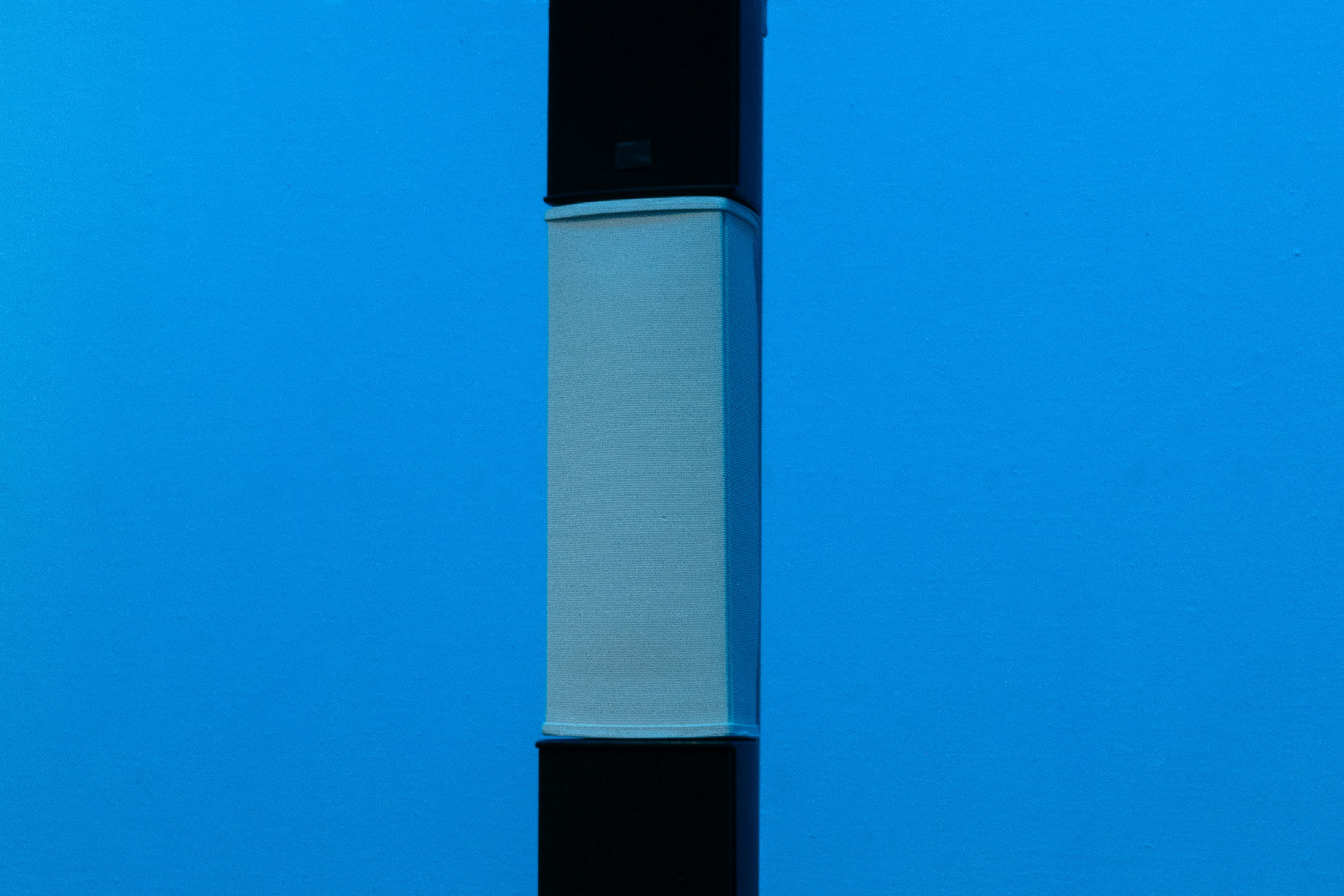YYYYMMDD >>> BACK HOME <<< >>> SELECTED FEATURES <<< >>> HIDDEN ARCHIVE <<<
[20231024]
MANY WAYS TO NOW by ARMIN LORENZ GEROLD at MINT [from 20230921 to 20231104]
[Photos: Johan Österholm]
















With text contributions by: Lori E. Allen, Anne Boyer, Jay Bernard, Reece Cox, Andrew Yong Hoon Lee, Mara Lee, Thuy-Han Nguyen-Chi, Alex Turgeon and James Schuyler.
This autumn, Mint presents a new commission by the Austrian artist and composer Armin Lorenz Gerold. The artist invites visitors into an audio-visual system of ceramic sculptures, vibrating devices, sounds and screens, transforming the exhibition space into a sensory acoustic landscape.
The artist draws inspiration from Anne Boyer’s work The Fallen Angel of the Senses, in which the author and poet maps the decay of the minor senses; touch, taste, and smell, in our “present arrangement of the world”, hyperextended or fractured from “capitalism’s distortions and pressures”. Gerold has invited a range of artists and poets to contribute texts that negotiate questions about time and temporality through a variety of cultural, political and poetic angles that disrupt, alter or shape the present. Works by Lori E. Allen, Anne Boyer, Jay Bernard, Reece Cox, Andrew Yong Hoon Lee, Mara Lee, Thuy-Han Nguyen-Chi, Alex Turgeon and James Schuyler are performed on multiple screens in the space with writer and translator Mara Lee and Gerold as voice actors. Gerold and his co-reader therefore interpret the words of the contributors, voicing these texts through their own individual reading. Throughout his practice, Gerold has been concerned with finding a nuanced approach to this ambivalence.
The recordings were made in the Stockholm building of the Workers' Educational Association (ABF), the very place in which the works are displayed, and in the Labour Movement’s Archive, the organisation that houses the Workers' Educational Association’s history. Gerold and Lee read from bleachers, a stage, in corridors and reading rooms. In the background, we hear the ticking of the archive's clocks, or the ringing bells of the adjacent church.
The sounds of the motorway as heard from the archive's courtyard in the periphery of the city are also included, as well as the inclusion of archival recordings from the early period of ABF's interaction with electronic sound art, in the early 1960s when EMS (The Centre for Swedish Electroacoustic Music), the Golden Circle Jazz Club and the concrete poetry of the Happening movement were all featured on the building’s stage. Echoing the way that the Swedish artist and electronic musician Åke Karlung once played on the stairwell's bannister and turned the house into an instrument, Gerold evokes a rhythm from its interior and surroundings.
There is a sensual intensity in Gerold's language and the way he investigates multiple aspects of sound using the spoken text as a recurring point of departure. The text is dramatised through voices but is also extended through the effects that succeed in evoking the experience of a place during a particular moment in time. Based on a cinematic logic, the artist suggests a feeling for how one listens to the moment and the complexity by which sensory experience overlaps. This is where aspects of time become palpable, they become components and language, elevated. With this approach, Gerold creates movements between distraction and absorption, like walking between situations where listening feels different, sometimes intimately whispering, sometimes eavesdropping from afar. The production's composition is translated into the exhibition space, where you move between voices, sounds and music. You can approach the vibrating sculptures and gently touch them, and you can understand the room as a montage for which your presence and distraction creates an individual cutout. Wandering through the authors' recorded texts about the contested presence, songs and sounds creates a sonic theatre with many crossroads. Many ways lead to many nows.
[Text: Emily Fahlén]
©YYYYMMDD All content and design by Daniela Grabosch + Ricardo Almeida Roque unless otherwise stated. Images, Videos and Texts can only be used under permission of the author(s).